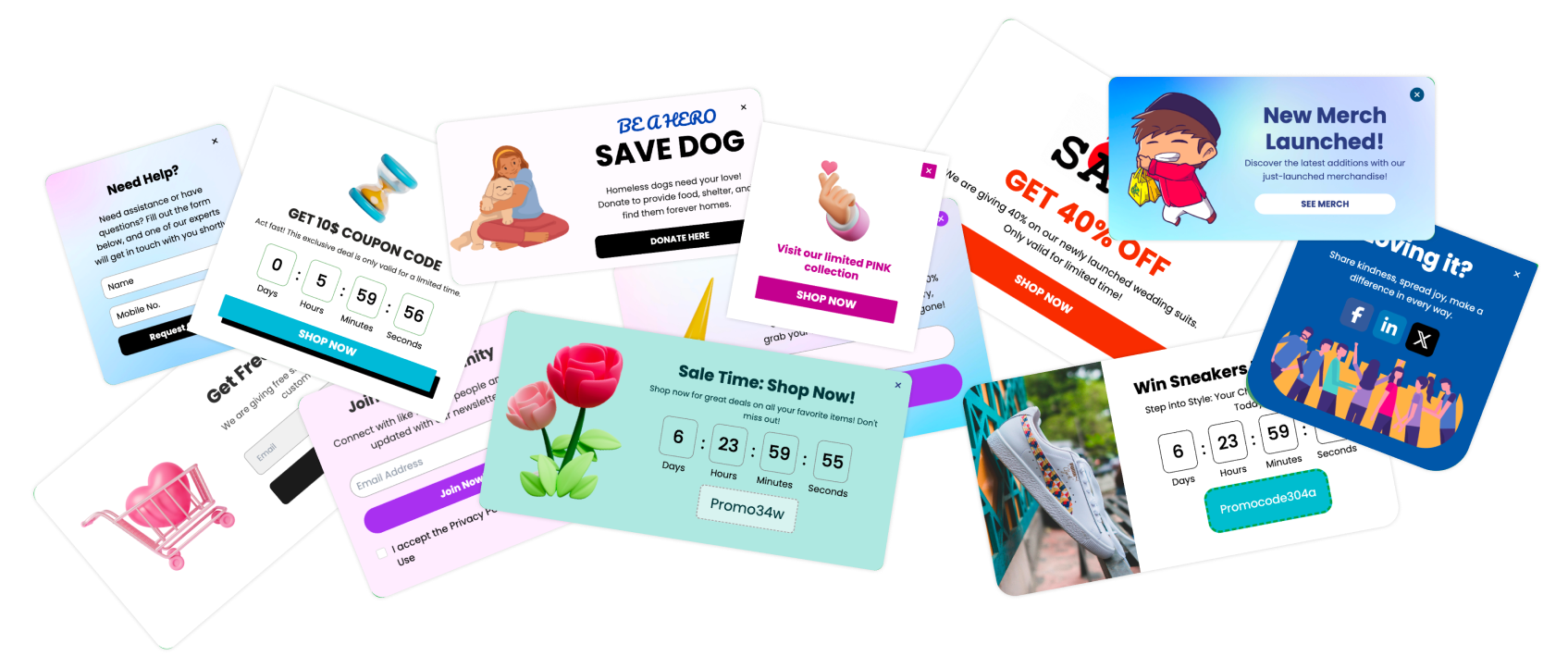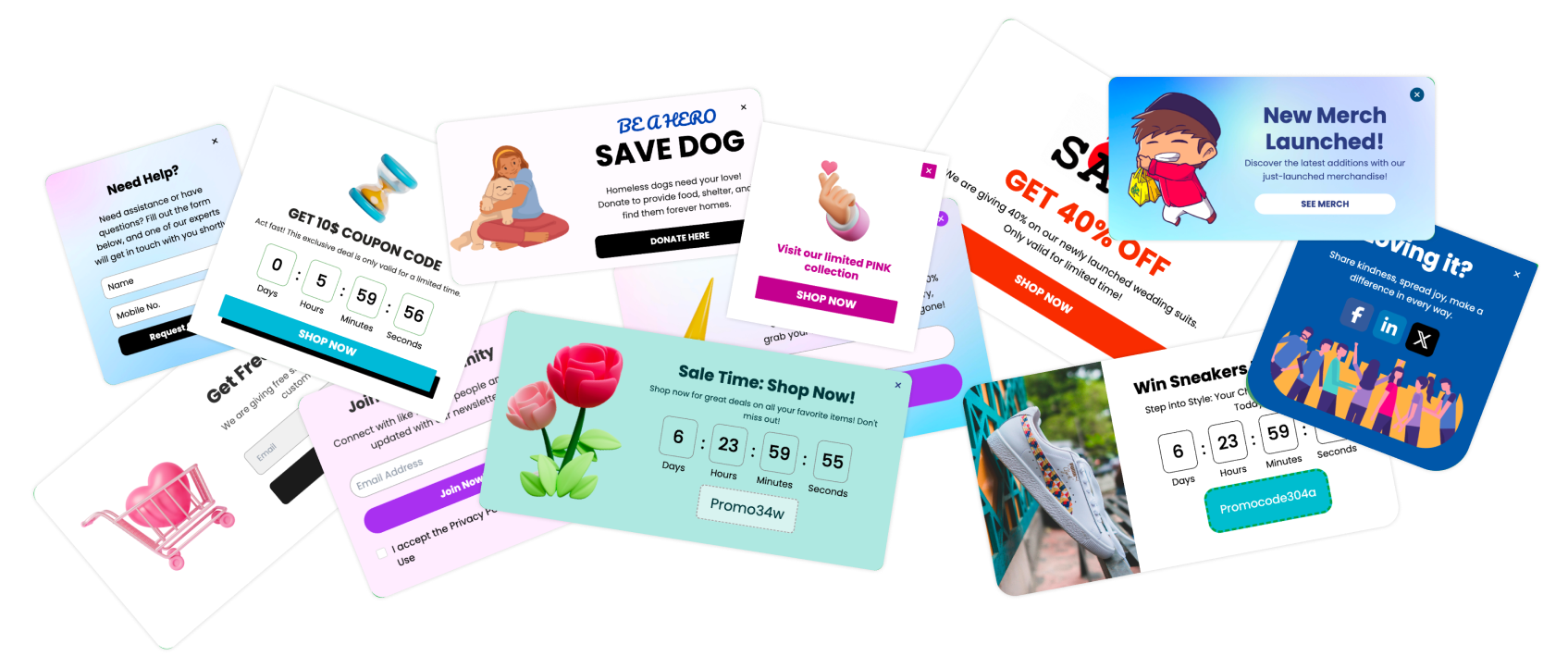You love how Pensight centralizes your links, services, and payments. But wouldn't it be great to bring that interactive profile directly onto your own website, creating a seamless experience for your visitors? The goal is clear: you want to embed Pensight into your website.
While technically possible using HTML <iframe> tags, there's a critical first step: determining if Pensight allows its pages to be embedded elsewhere. Many platforms restrict this for security reasons.
This guide explores:
The Crucial Permission Check: Why Pensight might block embedding and how to potentially verify.
Official Widgets (If Any): The best-case scenario provided by Pensight.
Using <iframe> (If Allowed): The standard HTML method.
Managing Embeds with Poper: How Poper simplifies placement and styling if Pensight permits embedding.
Step Zero: Check if Pensight Permits Framing
Before you write a single line of code, understand this: You can likely only embed Pensight if Pensight explicitly allows it.
Why Restrictions Exist: Websites use HTTP headers like X-Frame-Options or Content-Security-Policy (CSP) frame-ancestors to prevent other sites from displaying their pages inside frames (like <iframe>). This is a vital security measure against attacks like "clickjacking," where a malicious site might trick users into interacting with an invisible, framed version of a legitimate site.
What Happens if Blocked: If Pensight sends headers like X-Frame-Options: DENY or CSP: frame-ancestors 'none', any attempt to embed it in an iframe on your domain will simply fail – the browser will show a blank space or an error.
How to Check (Potentially):
- Try a Basic iFrame: The quickest test is often just trying it. Create a simple HTML file with <iframe src="YOUR_PENSIGHT_URL" width="600" height="800"></iframe> and open it locally. If it loads, embedding might be allowed. If it's blank, it's likely blocked.
- Browser Developer Tools: Visit your Pensight page directly. Open Developer Tools (F12), go to the "Network" tab, refresh the page, click the main document request, and look under "Response Headers" for X-Frame-Options or Content-Security-Policy. Restrictive values mean embedding is blocked.
- Pensight Documentation/Support: The most reliable way is to check Pensight's official help documentation or contact their support to ask if they allow embedding their profile pages via iframes and if they have any specific instructions or limitations.
Try a Basic iFrame: The quickest test is often just trying it. Create a simple HTML file with <iframe src="YOUR_PENSIGHT_URL" width="600" height="800"></iframe> and open it locally. If it loads, embedding might be allowed. If it's blank, it's likely blocked.
Browser Developer Tools: Visit your Pensight page directly. Open Developer Tools (F12), go to the "Network" tab, refresh the page, click the main document request, and look under "Response Headers" for X-Frame-Options or Content-Security-Policy. Restrictive values mean embedding is blocked.
Pensight Documentation/Support: The most reliable way is to check Pensight's official help documentation or contact their support to ask if they allow embedding their profile pages via iframes and if they have any specific instructions or limitations.
Assume embedding is not allowed unless you can confirm otherwise.
Embedding Your Pensight Page with Our Tool
Step 1: Get Your Pensight URL Ready
First things first, you need the web address (URL) of your Pensight page – the one you want to show up on your site.
Grab that link and head over to our free iframe generator tool right here: iFrame Generator.
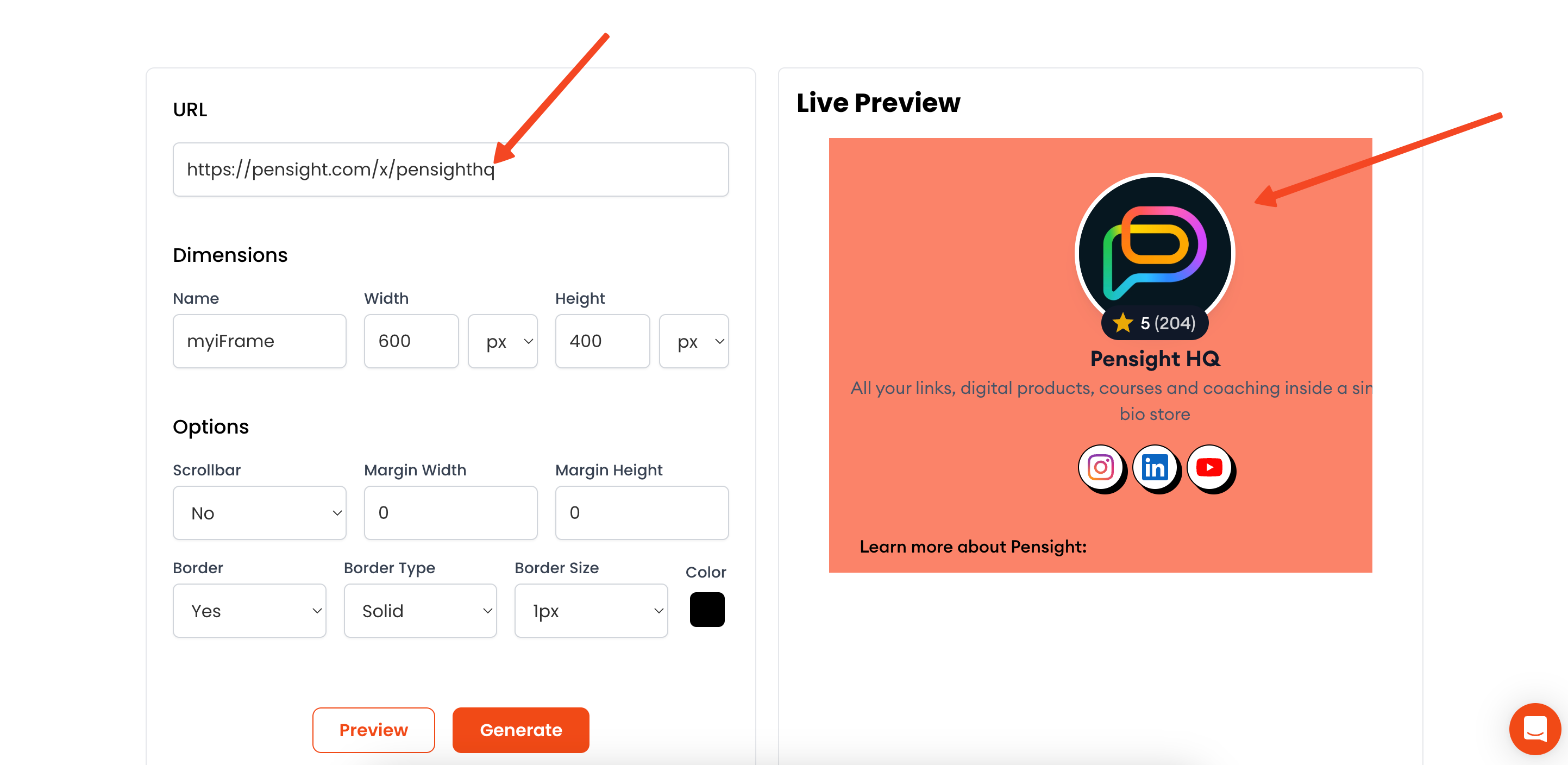
Paste your Pensight URL into the first box you see. This tells the tool what content you want to embed.
Step 2: Set the Size for a Perfect Fit
Now, you need to decide how big the embedded Pensight section should be on your page. Use the 'Width' and 'Height' settings in the tool. Think about where it will go on your site – maybe a sidebar, or a full-width section?
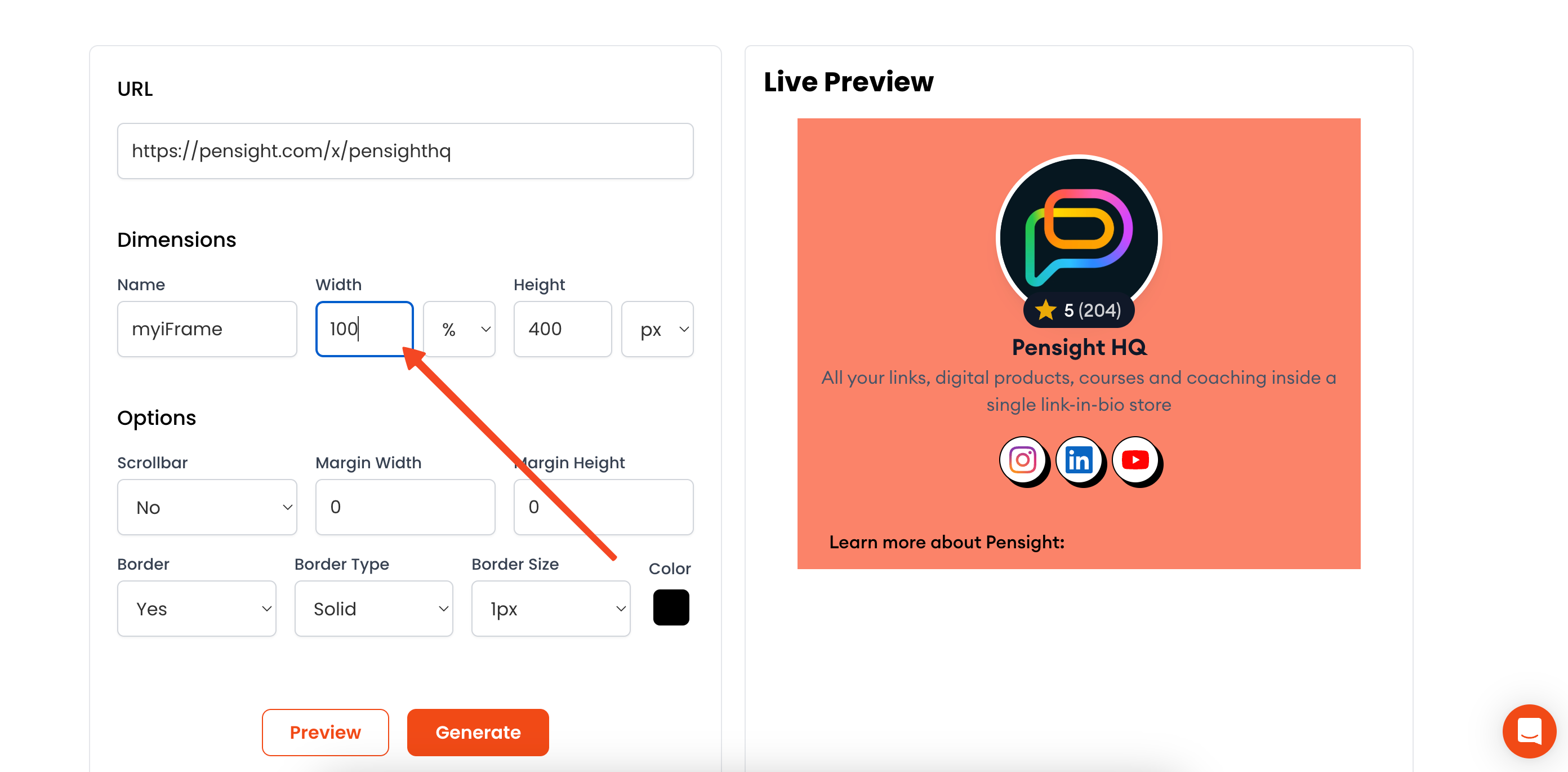
Adjust these numbers until the preview looks right. Getting the size correct ensures your Pensight content doesn't look squished or have too much empty space around it.
I usually recommend starting with a width like '100%' if you want it to fill the container it's in, and then adjust the height based on the content.
Step 3: Consider Adding Borders or Scrollbars
Sometimes, you might want a visual border around the embedded content to separate it clearly. You can easily add one using the border options.

Also, if your Pensight page is quite long, enabling a scrollbar ensures visitors can see all of it without making the embedded section excessively tall on your page.
These are optional, so only add them if they improve the look and usability.
Step 4: Generate and Copy Your Embed Code
Once you're happy with the size and optional settings, hit the 'Generate' button. The tool will instantly create a snippet of HTML code – this is your iframe embed code.
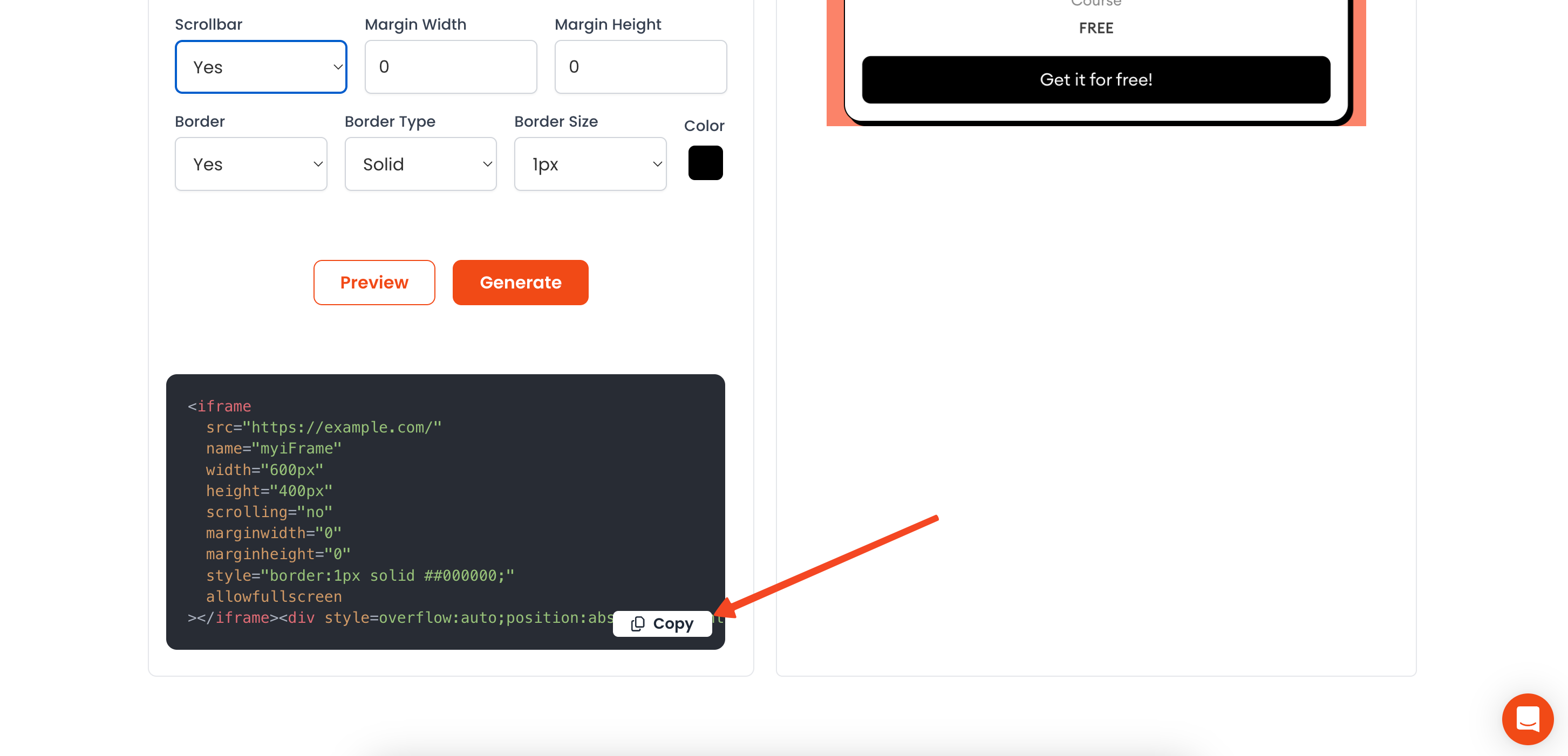
Just click the copy button to grab it. This code is what tells the web browser to display your Pensight page within your own website.
Step 5: Paste the Code into Your Website
Next, you need to add this copied code to your website's backend. Where you paste it depends on your website platform (like WordPress, Shopify, Squarespace, etc.).
Usually, you'll look for an option to add 'HTML', 'Custom Code', or embed content. Paste the code snippet right there.
Step 6: Preview Your Live Page
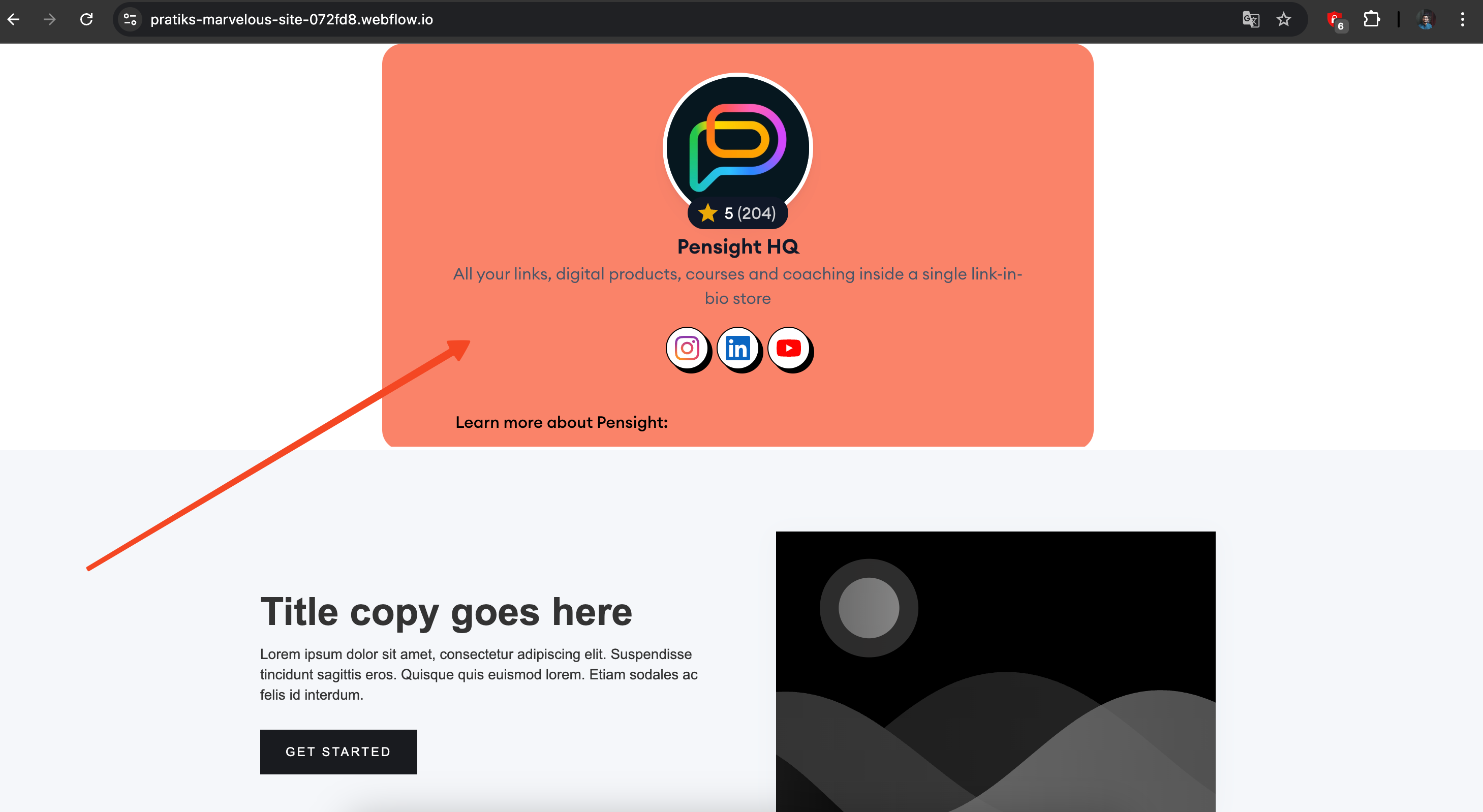
Finally, after adding the code, make sure to publish or update your webpage. Then, open the live page in your browser just like a visitor would.
Check that the Pensight embed looks correct, fits the space well, and that any links or functions within it work as expected. This final check ensures everything is set up perfectly before your audience sees it.
And that's it! You've now seamlessly integrated your Pensight page right into your own website using our simple generator.
Tips for Embedding Pensight (If Possible)
Prioritize Official Widgets: Always use Pensight's own embed code if available.
Test Functionality: Ensure all links, buttons, and forms within the embedded Pensight profile work correctly.
Adjust Sizing Carefully: Find a width/height that displays the content well without excessive scrolling or cutoff elements. Use percentages for width where possible.
Consider Mobile: How does the embed look and feel on smaller screens? Test thoroughly.
Provide Context: Briefly explain what the embedded section is on your webpage.
Conclusion: Check Permissions First, Then Choose Your Method
Wanting to embed Pensight into your website is a smart goal for unifying your online presence. However, success hinges entirely on Pensight's policies regarding framing.
Verify: Confirm if Pensight allows embedding via headers or documentation.
Check: Look for official Pensight embed widgets – use these if available.
Embed (If Allowed): Use a manual <iframe> or official code.
Manage (Optional): Leverage Poper to simplify placement and styling of the embed code without needing to constantly edit your site's HTML.
Don't waste time fighting technical limitations. Confirm Pensight's stance first, then choose the most appropriate and manageable embedding technique.
Frequently Asked Questions (FAQs)
Can Poper force Pensight to embed if it's blocked by X-Frame-Options?
No. Poper is a client-side management tool. It cannot override security headers sent by Pensight's servers that instruct browsers not to allow framing. If Pensight blocks embedding, neither Poper nor manual iframes will work.
What's the easiest way to know if Pensight allows embedding?
Check their official help documentation or contact Pensight support directly. This is more reliable than technical checks, which might misinterpret complex Content-Security-Policy rules.
If Pensight offers official embed code, can I still use Poper?
Yes! You would simply paste Pensight's official code snippet into Poper's HTML element instead of a manual <iframe> tag. You then gain Poper's benefits for placement (CSS Selectors) and container styling.
Will embedding Pensight slow down my website?
Embedding any external content, especially an interactive page like Pensight, adds load time. It requires loading resources from Pensight's servers. Optimize the rest of your page and use embedding thoughtfully.
Can I style the actual content inside the embedded Pensight frame?
No. Browser security (Same-Origin Policy) prevents you (and Poper) from applying CSS styles directly to the content loaded from a different domain (Pensight.com) within an iframe. You can only style the iframe element itself and its container.

